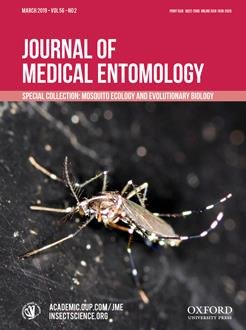Roberto Barrera, Angela Harris, Ryan R. Hemme, Gilberto Felix, Nicole Nazario, Jorge L. Muñoz-Jordan, Damaris Rodriguez, Julieanne Miranda, Eunice Soto, Stephanie Martinez, Kyle Ryff, Carmen Perez, Veronica Acevedo, Manuel Amador, Stephen H. Waterman
Journal of Medical Entomology 56 (4), 1033-1046, (12 February 2019) https://doi.org/10.1093/jme/tjz009
KEYWORDS: mosquito control, Aedes aegypti, Zika virus, vector-borne pathogen, AGO traps
This investigation was initiated to control Aedes aegypti and Zika virus transmission in Caguas City, Puerto Rico, during the 2016 epidemic using Integrated Vector Management (IVM), which included community awareness and education, source reduction, larviciding, and mass-trapping with autocidal gravid ovitraps (AGO). The epidemic peaked in August to October 2016 and waned after April 2017. There was a preintervention period in October/November 2016 and IVM lasted until August 2017. The area under treatment (23.1 km2) had 61,511 inhabitants and 25,363 buildings. The city was divided into eight even clusters and treated following a cluster randomized stepped-wedge design. We analyzed pools of female Ae. aegypti adults for RNA detection of dengue (DENV), chikungunya (CHIKV), and Zika (ZIKV) viruses using 360 surveillance AGO traps every week. Rainfall, temperature, and relative humidity were monitored in each cluster. Mosquito density significantly changed (generalized linear mixed model; F8, 14,588 = 296; P < 0.001) from 8.0 ± 0.1 females per trap per week before the intervention to 2.1 ± 0.04 after the percentage of buildings treated with traps was 60% and to 1.4 ± 0.04 when coverage was above 80%. Out of a total 12,081 mosquito pools, there were 1 DENV-, 7 CHIKV-, and 49 ZIKV-positive pools from October 2016 to March 2017. Afterward, we found only one positive pool of DENV in July 2017. This investigation demonstrated that it was possible to scale up effective Ae. aegypti control to a medium-size city through IVM that included mass trapping of gravid Ae. aegypti females.

